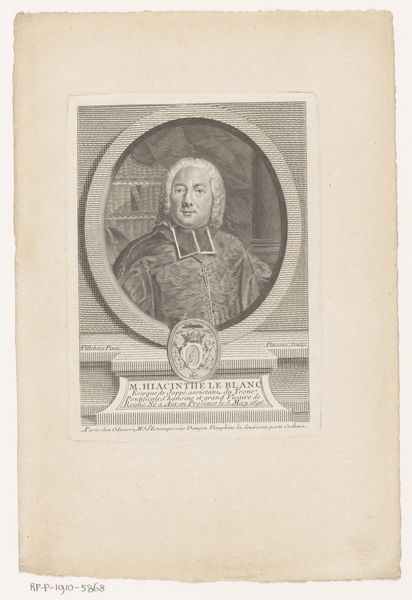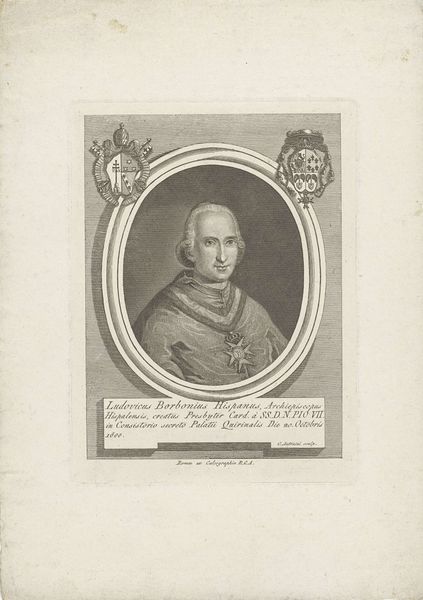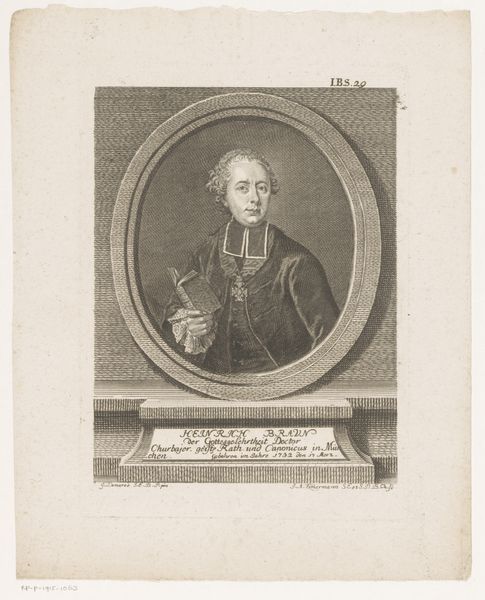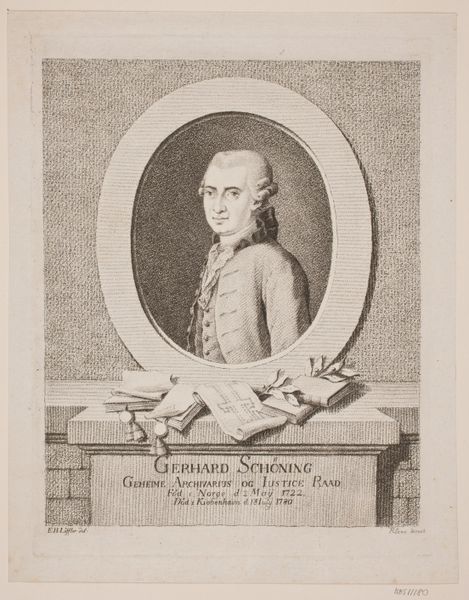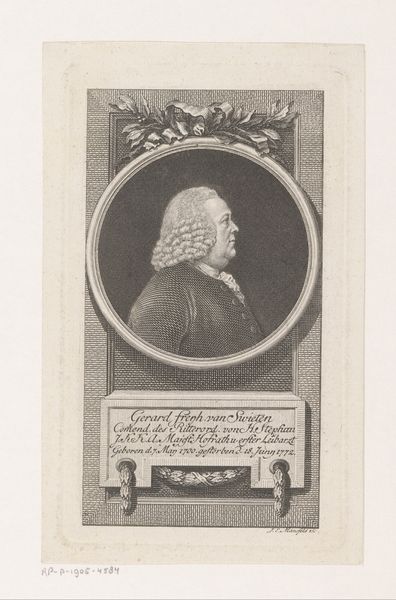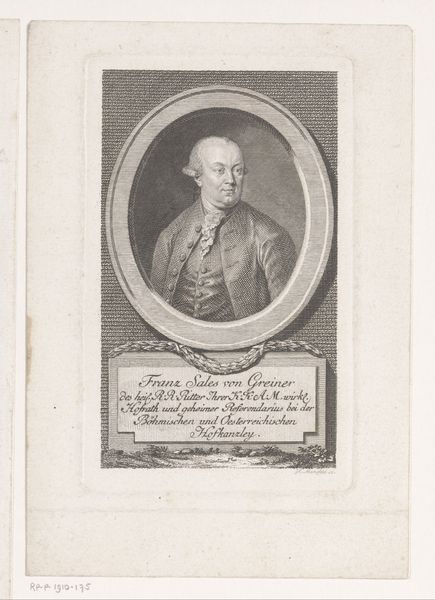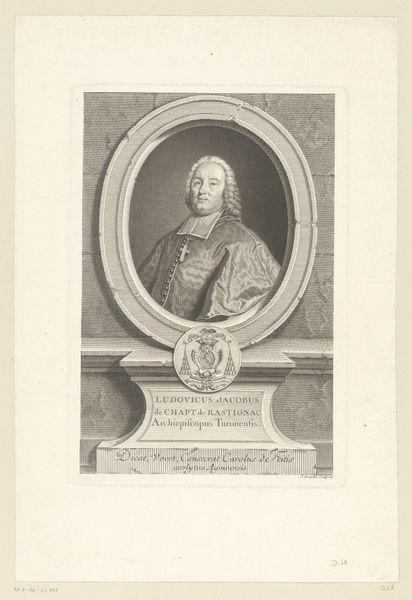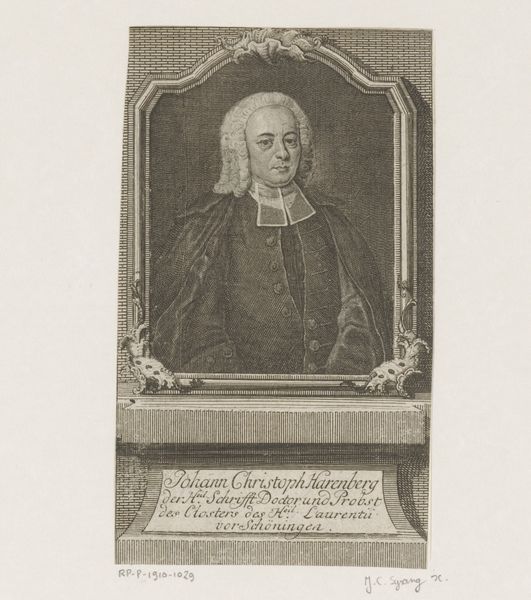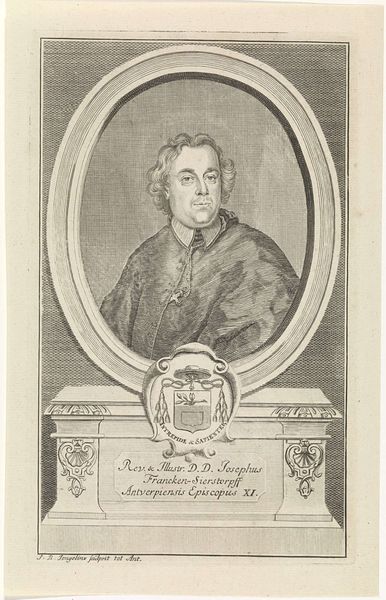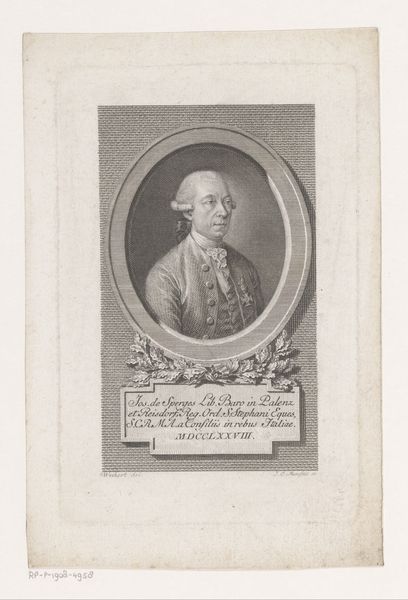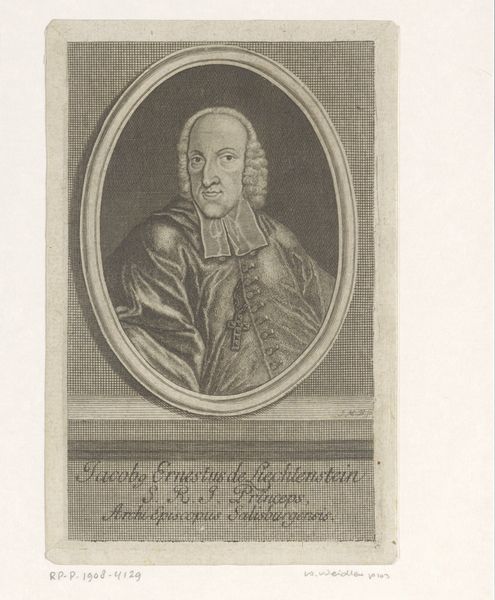
engraving
#
portrait
#
neoclacissism
#
old engraving style
#
history-painting
#
engraving
Dimensions: height 224 mm, width 167 mm
Copyright: Rijks Museum: Open Domain
Curator: This is Carlo Antonini’s “Portret van kardinaal Ercole Consalvi,” an engraving likely made between 1795 and 1805. Editor: The austerity is the first thing that strikes me; the stark white paper, the tight oval framing… It exudes a formal power, an almost chilling reserve. Curator: Absolutely. Antonini situates Consalvi within the visual language of neoclassicism—emphasizing reason, order, and a return to classical ideals after the Rococo period. Consider Consalvi's historical positioning. He was a powerful cardinal, central to papal politics during a tumultuous era including the Napoleonic wars. This engraving reinforces his authority through calculated visual choices. Editor: And it uses a very specific visual vocabulary. The escutcheons in the upper corners are laden with symbols. On the left is a heraldic shield displaying crossed keys, referencing Saint Peter and papal authority. The coat of arms on the right symbolizes the Consalvi family, rooted in ancient nobility. Even the texture feels intentional, echoing marble. Curator: Those symbolic choices were very deliberate in the representation of religious power. Consalvi helped to reshape the relationship between church and state. What could this portrait suggest about how people in this period negotiated the return of old authorities after the revolution? Editor: The gaze is definitely intended to impress upon you both his religious and familial stature. The engraving becomes not merely a picture, but an active reinforcement of that power. But what do you think: does this attempt at mythmaking fully work or do the visual constraints reveal also how the weight of authority needs to be carefully manufactured? Curator: That tension is essential; even in its own time this attempt at consolidating authority had to wrestle with modern ideas about the individual. A fascinating reminder that power never speaks from a neutral position. Editor: Indeed, tracing symbols in artworks provides avenues into exploring identity, lineage, and legacy and how it resonates through history. Thank you.
Comments
No comments
Be the first to comment and join the conversation on the ultimate creative platform.
